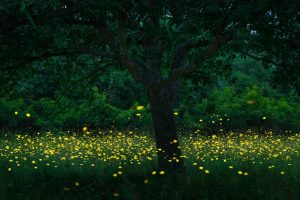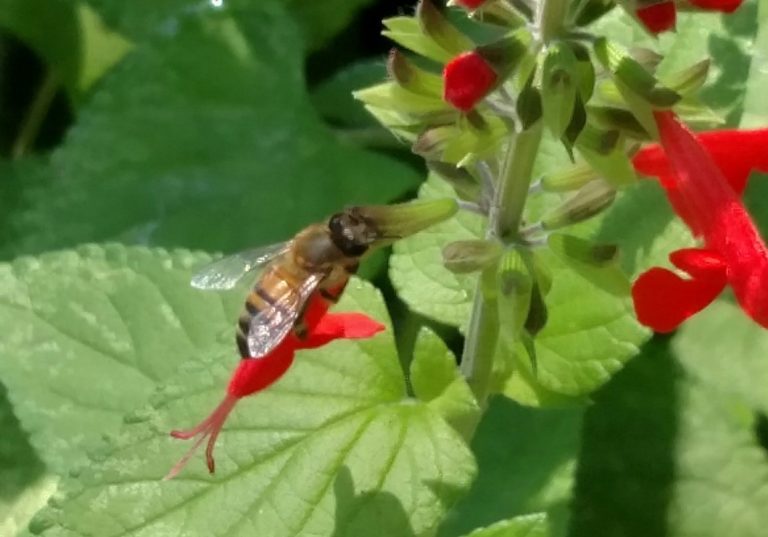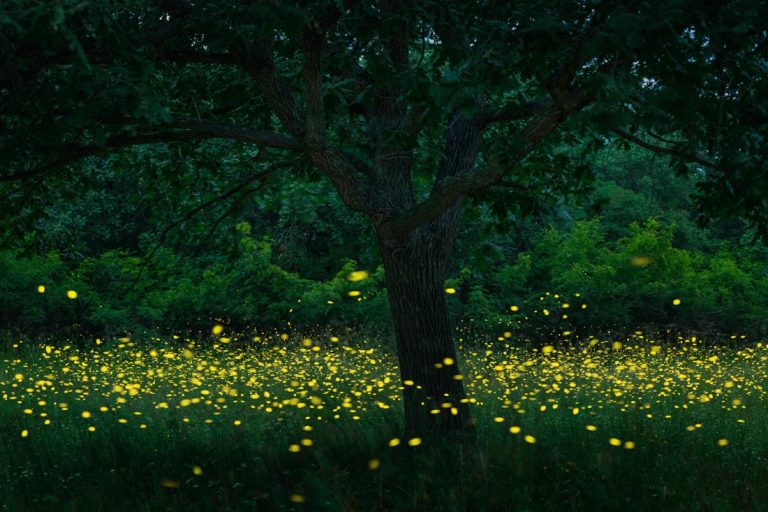Hunting frogs at night along dark waterways, edged by cypress swamps is an interesting pastime, especially if the nearest town with streetlights is 10 miles of dirt road away.
The best time to hunt frogs is on a moonless night, where the headlight I wore would temporarily blind the frogs and make them easier to catch. I know this sounds a little barbaric, but how else is one going to enjoy the delicacy of fried frog legs – called “cuisses de grenouille” in five-star French restaurants. But hunting frogs is a story for another time.
The point is that, in the swamp and along the bayous that meander through them, a moonless night is pitch black. Pitch black except for the millions of tiny lights moving in the sky and the countless millions of unmoving stars behind them. The moving lights were not only in the sky. They extended into the dark cypress swamps on either side. They hovered above the black waters. They swirled directly above my head.
Fireflies! Some synchronizing their chemical bioluminescence in unison, while others blinked on and off in a cacophony of light. Sometimes I would forget the frogs, turn off the headlight and simply drift with the sluggish current, lying back in my skiff as the light show passed above me.
That was, as human lifetimes go, a good many years ago. A more recent experience occurred along Panther Creek perhaps eight or nine years ago. It was twilight and I was walking Leon, my now-deceased goofy boxer. I thought I saw a tiny pinpoint of light in the corner of my eye. Then another. I had heard from someone that people on the verge of a stroke (or was it heart attack) sometimes saw flashes of light.
Suddenly, a thousand flashing lights emerged. Immediately across the creek was a small meadow and the lights converged on it, floating around the thigh-high tops of native grass. And then, just before all light faded, a small herd of deer walked into the meadow. Their legs obscured by the tall grass, they appeared to be floating on fairy dust. I was speechless. Leon, who would have ordinarily charged after the deer, dropped his jaw and sat. It was one of the rarest and most beautiful sights I have ever seen.
Several years ago, visiting a friend who lived in an isolated area, I saw about a dozen lonely fireflies flitting around his 10-acre property. And then nothing. I haven’t seen a firefly in several years, although I must believe that somewhere in southeast Texas and southern Louisiana, they still exist and perhaps thrive.
Fireflies are in the insect family Lampyridae, in the beetle order of Coleoptera. Their glow comes from the chemical luciferin. The name has the same Latin root as Lucifer, which basically means “light-bearer.”
Scientists are now studying the effects of luciferin in diagnosing tumors, cancer, and muscular dystrophy, which may one day bring some true medical breakthroughs. They are also studying luciferin in preventing food spoilage and bacterial contamination.
On the other hand, scientists are also studying why there has been such a dramatic decline in fireflies. They think that growing light pollution from enlarging human populations has a direct effect on them, as well as loss of habitat and increased insecticide use has dramatically reduced the populations.
I plan to go back one dark and moonless night to those three bayous and see if things have changed. If not, I may be treated to another awesome light show.



























